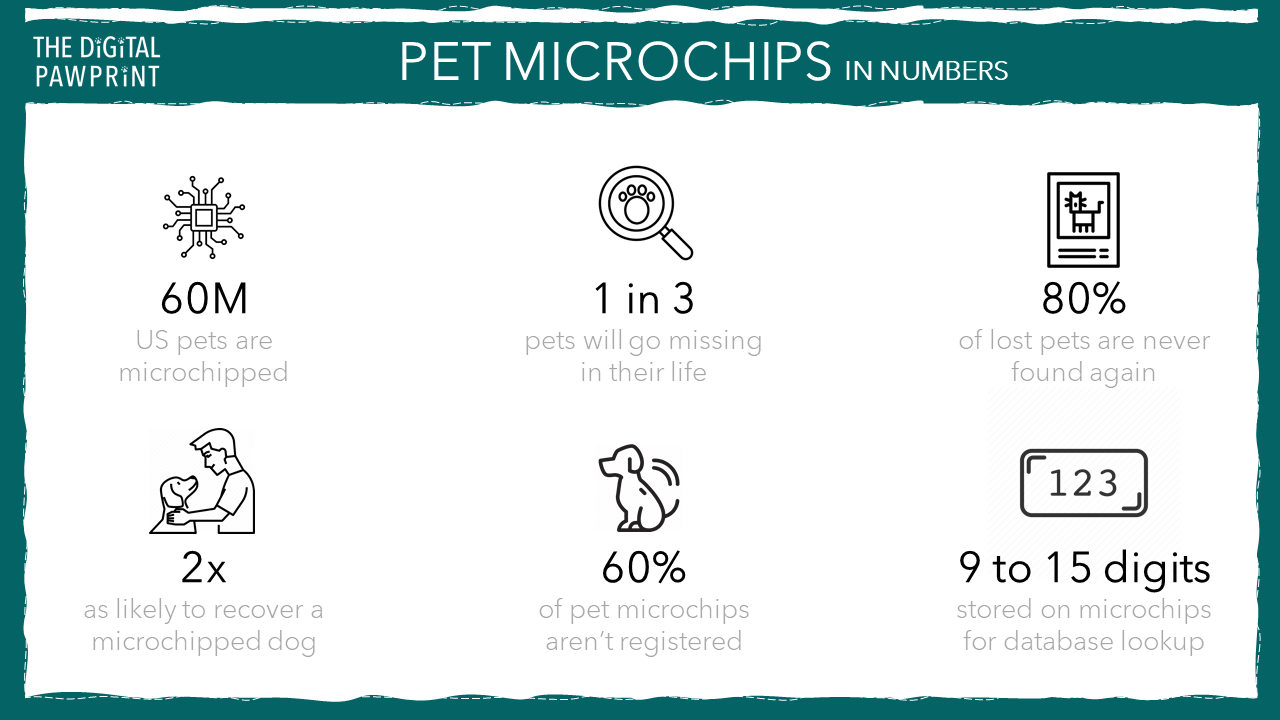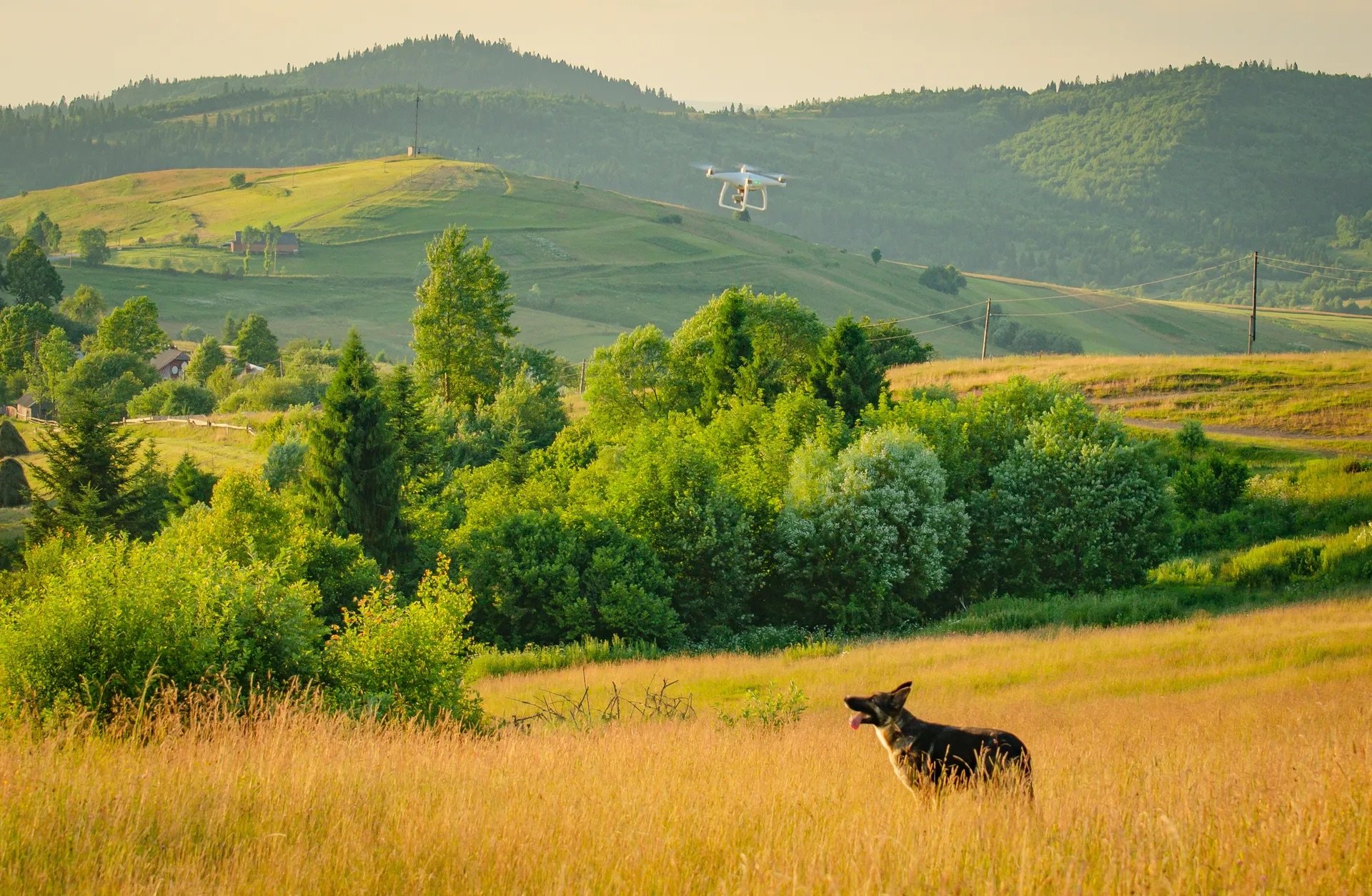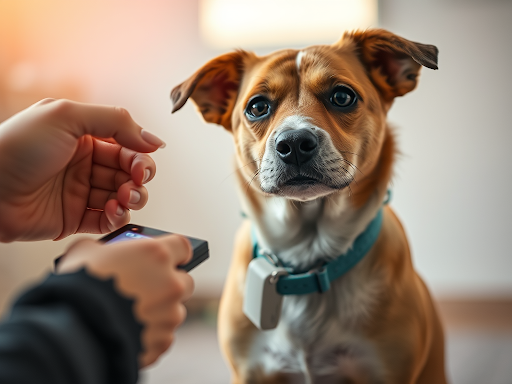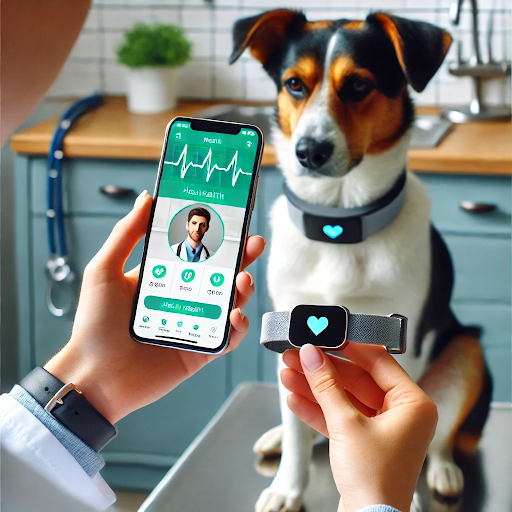- The Digital PawPrint
- Posts
- Unregistered microchips, drones finding lost dogs, and a new SSN for pets
Unregistered microchips, drones finding lost dogs, and a new SSN for pets
Was this forwarded to you? Subscribe to receive future volumes!
📈 A bite-sized stat tastier than kibble: Unregistered microchips
60% of pet microchips aren’t even registered
There are 60 million microchipped dogs and cats in the U.S., but over half of these microchips are either not registered to the current owner or contain outdated information. As microchips become more popular in the U.S., keeping registration details current is crucial. In 2021, Hawaii became the first state to mandate that owners microchip their pets, and local ordinances that mandate pet microchips are becoming more common.
A study by the American Veterinary Medical Association (AVMA) shows that microchipped animals are far more likely to be returned to their owners. Lost dogs with microchips are reunited at a rate of 52.2%, compared to just 21.9% for those without. For cats, the difference is even more striking: microchipped cats are returned to their owners at a rate of 38.5%, compared to only 1.8% for those without microchips.
For microchipped pets that were not returned to their owners, the most common reasons were incorrect contact details, lack of response, change of ownership, or, most concerning, the microchip not being registered in any database.
🐾 The purr-spective: What is the point of a microchip if it isn’t up to date? Microchips have great potential, but we still face challenges in making microchip registries easy to update and educating owners about the need to update them. How many pets will be lost because we fail to update our details or those of a new owner? Even worse, imagine implanting a microchip and then not registering the information—it would just come back as "not found."


🎾 What we’re chasing: New ways to locate lost pets
Drone technology: A thermal game-changer to find lost pets
When pets are lost in heavily wooded areas, it can be especially challenging to spot them. Thermal drones are emerging as a powerful tool that drone hobbyists, lost pet services, and fire departments are using to find pets quickly, and in situations where they otherwise might not be found.
Ohio’s first robotic fire department found two dogs in subzero temperatures with thermal drones, a rescue dog recently brought over from Taiwan went missing in Ottowa and was found by a drone hobbyist, and a drone pilot has found more than 40 lost dogs in the tri-state area. See a video of a drone finding the lost dogs in Ohio.
Equipped with infrared sensors, thermal drones detect heat signatures invisible to the human eye. Drones have their limitations: they’re not able to see under cars or trees, are less effective for smaller animals like cats, have limited battery life, and can’t fly in restricted airspaces. Despite these challenges, drones offer new hope for emergency and rescue services to leverage technology to speed up pet recovery.

Image recognition database matches lost pets with their owners
Shelters in Houston are adopting a national database called PetCoLoveLost.org to help reunite lost pets with their owners. The free platform uses patented image recognition technology to match lost pet reports with animals found or in shelters.
The technology integrates with platforms people already use to find lost pets, like Facebook, Nextdoor, and Ring. This is an additional measure alongside microchipping, not a replacement, and it’s only valuable to expedite pet recoveries and ease shelter overcrowding if there’s widespread adoption by pet owners and shelters.
Dog-scenting: A new approach to finding lost pets
Rescue dogs have been used to find missing people, and now they are trained to locate lost pets. These specially trained dogs use their keen noses to track the unique scent of missing pets, even days after they’ve gone missing. This innovative approach leverages the natural abilities of dogs, providing a potential game-changer in search and rescue efforts.
The question now is whether this technique can be replicated or enhanced with technology. While current tools offer some solutions, there’s still much to explore in combining human ingenuity and canine instincts to bring lost pets back home.
🐾 The purr-spective: One in three pets go missing in their lifetime—about 10 million a year—and over 80% are never found, according to the American Humane (AH). This calls for new approaches to find missing pets. Drones that detect heat signatures, scent-tracking K9 units, and even image recognition technology could transform pet recovery.
Imagine if your Ring camera could spot a lost pet in the neighbourhood and instantly alert the owner. Maybe soon, we’ll live in a world where 80% are found—and we’re committed to pouring more resources into getting there.

🐕🦺 The long leash: Microchipping 2.0
Microchipping 101: How does it work?
Pet owners often know that microchips are necessary for their pets, but not much more about the invisible device. This tiny implant, no larger than a grain of rice, carries a unique identification number that can be the key to bringing a wandering pet back home. Beyond the microchip, three other components are necessary for a microchip to be effective: the scanner, registry, and database. In our latest article, we peel back the layers of the pet microchipping landscape and the technology that makes up the microchipping system.

Future potential of this shiny chip
While microchips have greatly improved pet identification, they still face challenges like limited access to scanners, fragmented databases, and outdated owner information. But the potential of microchipping goes far beyond just reuniting lost pets. Imagine a future where your pet’s microchip serves as a unique identifier—like a social security number—used for pet insurance, veterinary care, or even grooming, creating a centralized report much like a credit check. Or think of a microchip number linked to a digital wallet, allowing your pet to “pay” for essentials at pet stores.
Companies like PetScan are working on smartphone-compatible scanners, making it easier for anyone to identify lost pets, while services like Check the Chip make it easier to register and update microchip information so they’re accurate and up-to-date.
We’re only scratching the surface of what these tiny devices can do. The future of microchipping holds exciting possibilities for keeping pets safer and more connected.

Missed the previous volumes and articles? Check them out!
Paw prints of progress: How pet healthcare is catching up to human medicine | Meowtel: Pioneering the in-home cat sitting experience |

